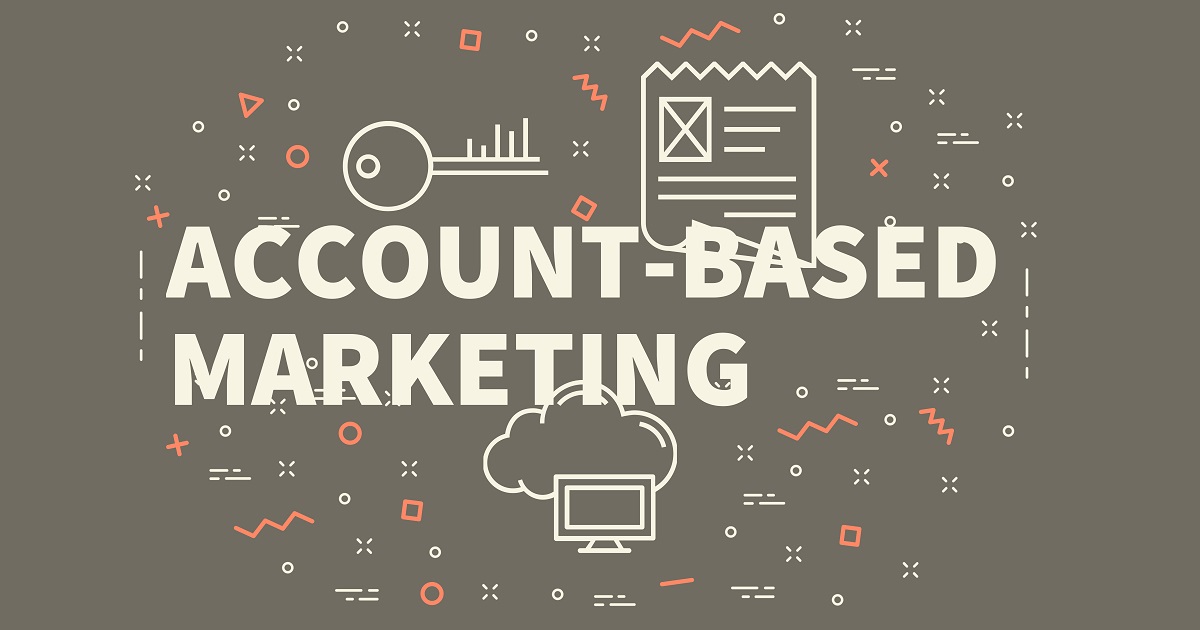
Account Based Data
Article | June 29, 2023
The shift in buyer behavior has increased the opportunities for digital ABM. Organizations implementing ABM are seeing significant success. But what does the situation in the EMEA (Europe, Middle East, Africa) market look like? ABM is still not well understood in EMEA. Two out of every three ABM programs are not showing optimal performance (Heinz ABM Research). However, things might not be as bleak as they seem.
Talking about the 2021 State of ABM in Europe report by Terminus, Albany Vincent, Senior Research Manager at Vanson Bourse said, “While we were not shocked to see the US to be moderately ahead of Europe in their ABM maturity, we were surprised to see how much more eager European companies were to adopt these practices and their American counterparts. It appears to be a very exciting time to be a marketer- especially in Europe."
Europe has stringent data laws, so the account-based approach could be the only way for sustainable growth for organizations based in EMEA.
Do You Know Enough About ABM Execution?
Taking into account the ever-evolving account-based approach, here are five things you should know about ABM and how to implement it for optimal performance:
A Curated Account List Is the Secret Ingredient
Your target account list should be the result of a conversation between your sales and marketing teams using as much high-quality data as possible. Start off by implementing the program on a small number of accounts and analyze your ROI. Then, periodically revaluate your team performance, tools, skills, and messaging to clear the path for ABM success.
Your Sales and Marketing Teams Should Share Their Pizzas
Sales and marketing synchronization is the most basic requirement of ABM. The marketing team can enable sales with target accounts’ interests and behavior data. The sales team, on the other hand, can give the marketing team insights into key members of the target account buying group. According to research by ZoomInfo, when the sales and marketing teams are aligned, organizations have a 36% higher customer retention rate and a 67% improved chance of converting leads.
Depending Only on MQLs Will Not Get You Far
The TechTarget 2021 Media Consumption Survey highlighted that most buying teams have an average of five people, but can also be more than ten. Understanding the intent of the individuals from the buyer group and offering them value through every sales and marketing interaction is crucial to the success of your ABM strategy. Depending on only MQLs can limit the potential of your ABM.
Only Strategic Content Brings in the Results You Want
Your target accounts are flooded with content every day. To stand out in the crowd and appeal to the individuals in the buying group, you need to align your content with their customer personas. The content should address their pain points and needs. It should be crafted based on an account’s maturity, challenges, and technical abilities.
ABM Isn’t Your Regular Marketing Strategy
ABM is a strategic approach where the marketing and sales teams share their insights through the account interactions of everyone in an account. Then they collectively reach out to the whole buying team rather than targeting just a few individuals. ABM takes a detailed look at the target account and aligns your business with your prospects’ needs and pain points, and this easily surpasses a regular marketing strategy.
Circling Back
ABM in EMEA is still evolving. Therefore, organizations need to make special efforts to implement ABM effectively, keeping the target accounts in focus and understanding the attributes of ABM in detail to get the most out of it.
Read More

Buyer Intent Data
Article | March 6, 2023
Gay Pride or LGBTQ+ Pride is the promotion of dignity, equality, and increased visibility of lesbian, gay, bisexual, and transgender (LGBTQ+) people as a social group.
Pride, as opposed to shame and social stigma, is the predominant outlook that bolsters most LGBTQ+ rights movements. LGBTQ+ stands for lesbian, gay, bisexual, and transgender, while the '+' is an inclusive symbol meaning 'and others' to include people of all identities.
It's a celebration of people coming together in love and friendship to show how far LGBTQ+ rights have come and how there's still work to be done in some places. Pride events range from solemn to carnivalesque and are typically held during LGBTQ+ Pride Month or other periods that commemorate a turning point in a country's LGBTQ+ history. For example, Moscow Pride in May for the anniversary of Russia's 1993 decriminalization of homosexuality.
A short history of Pride
Lesbian, Gay, Bisexual, Transgender, and Queer (LGBTQ+) Pride Month is celebrated every year in June to honor the Stonewall Riots that took place on 28 June 1969 – a rebellion led by trans women of color that acted as a tipping point for the Gay Liberation Movement in the United States.
However, the Stonewall Riots weren’t the first time the LGBTQ+ community organized to stand up for their cause. The Society for Human Rights was founded by US Army soldier Henry Gerber in 1924 and produced the US’ first-ever gay rights newsletter, ‘Freedom & Friendship’ – inspired by the work of the Scientific-Humanitarian Committee, an organization dedicated to overturning Germany’s anti-homosexual rulings at the time.
In the 1950s, Harry Hay founded The Mattachine Society in Southern California to provide a space for gays and lesbians to gather and discuss their experiences as homosexuals. While The Daughters of Bilitis was one of the first lesbian organizations ever established in the US, formed in 1955 by Phyllis Lyon and Del Martin.
And in the 1960s, riots at both Compton’s Cafeteria in San Francisco and Cooper Do-Nuts in Los Angeles represented the first time that LGBTQ+ people stood up against police harassment.
Take a journey through time to explore more of the obscure political history of Pride with them.'s video featuring Billy Porter on the subject below.
Pride in 2022
Today, celebrations include pride parades, picnics, parties, workshops, and concerts. LGBTQ+ Pride Month events attract millions of participants around the world. Memorials are also held throughout the month for those members of the community who have been lost to hate crimes or HIV/AIDS.
The purpose of the commemorative month is to recognize the impact that lesbian, gay, bisexual, and transgender individuals have had on history locally, nationally, and internationally.
Pride Month is about acceptance, equality, celebrating the work of LGBTQ+ people, education in LGBTQ+ history, and raising awareness of issues affecting the LGBTQ+ community. It also calls for people to remember how damaging homophobia was and still can be.
Did you know?
American bisexual rights activist Brenda Howard is known as 'The Mother of Pride' after organizing the first-ever Gay Pride March in Chicago – The Christopher Street Liberation Day March on 28 June 1970
Common symbols of pride include the rainbow flag and other pride flags. Today, the Progressive Pride flag is flown and celebrates the diversity of the LGBTQ+ community
The São Paulo LGBTQ Pride Parade is the largest in the world, welcoming three to five million attendants each year
The suggestion to call the movement 'Pride' came from L. Craig Schoonmaker, who in 2015 said: A lot of people were very repressed, they were conflicted internally, and didn't know how to come out and be proud. That's how the movement was most useful, because they thought, 'Maybe I should be proud.
Since 28 June 1970, Pride events have grown bigger, bolder, and well more proud!
Read More

Programmatic ABM
Article | June 9, 2022
Many marketers define ABM as good B2B marketing. Targeting the right accounts at the right time with an appropriate message is the golden aim of account-based marketing (ABM). ABM ensures not only reach but also accuracy.
In an interview with Media 7, Ryan Phelan, Marketing Chief / Fractional CMO at Origin Email, talked about the importance of ABM technology and the challenges in marketing after the COVID-19 pandemic began.
"B2B companies should adopt ABM technology to level up their communications and react quickly."
ABM technology enables marketers to hit pipeline and revenue targets swiftly while working alongside sales teams.
Salesforce provides ABM automation to its clients using AI Einstein technology in their Customer Success Platform. But what does Salesforce’s ABM platform look like? How are they finding accounts that need a sophisticated AI-run ABM marketing platform?
How Salesforce Created Its ABM Program
Salesforce considered B2B buyer behavior (purchase intent and engagement) to deliver a solid marketing and sales experience for each of its strategic accounts. Accordingly, it took the following steps to kick-start its ABM program:
Defining ABM
Salesforce ABM marketing team handles campaigns that target 300 or fewer accounts.
An ABM program can have many approaches. It can be 1: Many, 1: Few, or 1:1. The smaller the radius of the process, the more hyper-focused the campaign, content, budget, and customer journeys are.
By simply aligning their approach strategy with defined ABM, Salesforce achieved larger deal sizes, higher sales win rates, higher ROI, and faster revenue growth compared to other marketing strategies. It suitably approached accounts that it thought were high value and showed buyer intent for their products and services.
Choosing a Suitable Account-based Platform
Salesforce was aware that it would have to engage a variety of vendors and platforms to run its ABM program smoothly. It had to go beyond building a foundation for its program. For that, it needed dedicated tools and resources. Without account-based partners that could provide them with these tools and resources,it would be difficult to implement their program. They chose RollWorks as their account-based partner, to set up their ABM program.
Putting Together a Dedicated Team to Ensure ABM Program’s Success
Creating a single team to support and execute the ABM program was crucial before launching the ABM campaigns Salesforce had planned. They had teams who knew what ABM was all about; they even ran campaigns in silos. So, Salesforce pooled its ABM resources and formed a single team to carry out ABM-related operations.
Identifying Strategic Target Accounts
With the support of technology, Salesforce validated the list of target accounts and filtered out accounts that weren’t such a good fit using their first-party data. They made sure they looked at all the possible data they had, including third-party, so there was no scope for error. As a result, they had a list of high-value accounts with an ideal customer profile (ICP).
Engaging the Target Accounts
After the target accounts were identified, Salesforce ran campaigns of highly customized content for each stage of the sales journey to entice prospects. Once the prospects entered the sales pipeline, hyper-personalized messages, ads, and emailers were sent to them using AI.
Using Data for Continued Engagement
Salesforce ABM campaigns used all available data to create new or repurpose existing content assets like customer stories, consultation forms, research reports, and blog posts to nurture the leads at every stage.
Cultivating Customer Relationships
Using a specially created ABM dashboard, Salesforce monitored its campaign results to understand which content its leads engaged with the most. Then, it removed the content that did not generate engagement to streamline engagement with previous unengaged leads. The secret was to create humane content that didn’t have buzzwords, consistently maintain brand voice and tone, and make special content that the leads could resonate with.
Educating and engaging the leads increased the deal sizes and customer lifetime value. Holistic reporting helped them evolve their ABM strategy continuously.
By creating a robust ABM program that took care of its targeting accounts’ evolving needs, pain points, and expectations, Salesforce saw a 24 percent faster revenue growth and an 87 percent higher ROI.
How Salesforce Got a 30 Percent Close Rate by Using ABM Technology
While promoting their Boston World Tour Series, Salesforce used ABM campaigns to get registrations. One out of their fourtarget accounts engaged with their content, and an average of five contacts per account engaged with them. In six weeks, they got in touch with 410 target accounts, of which 110 engaged with them. They achieved a 30 percent close rate for their campaign.
Creating an ABM Program like Salesforce
Salesforce has come a long way by using ABM technology to expand its offerings. It has AI-powered products, tools, and services that provide ABM automation to other companies. For example, their ABM Salesforce Marketing Cloud product has helped brands like Herman Miller achieve a 200% increase in their email revenue.
To create an effective ABM program like Salesforce, you can use their steps as a blueprint. These steps apply to all kinds of businesses, but if you still don’t know how and where to start, find the answers to the following questions to comprehend what you can do next:
Do you think ABM is right for your business?
Are there any customer accounts that require special attention?
Can your business fund expert consultation for ABM and eventually an ABM program?
Once you find the answers to the above questions, you can take your first step towards building an effective ABM program that can help you scale your business.
Conclusion
ABM technology is revolutionizing B2B marketing by harnessing AI and targeted approaches, personalization, and automation using high-quality intent data. Implementing an effective ABM strategy is crucial to driving ROIs and growth.
FAQ
How does ABM differ from a traditional lead generation marketing strategy?
ABM helps you target high-value accounts with hyper-personalized content, instead of presenting generic content to unclassified accounts.
What is an ABM platform?
An ABM platform is a technology that helps marketers run their ABM programs at scale.
Why is ABM important in your marketing efforts?
With the help of ABM, marketers may be able to shorten their sales cycle, increase their marketing involvement in the sales funnel, and achieve a high ROI.
Read More

Account Based Data
Article | August 4, 2022
For B2B marketers like you, wouldn’t it be great to know which buyers are ready to purchase and when? It would be, but this doesn’t generally happen. Marketing and sales teams across businesses spend their time trying to find the perfect prospects instead of focusing on selling to the accounts that actually want to buy.
What Goes into Prospecting?
Prospecting is an entire process that is not only time-consuming but might not lead to anything worthwhile. Common steps involved in prospecting include:
Finding accounts that fit your target account profile
Zeroing in on the point of contact to get in touch with the account
Creating messaging to influence prospect’s buying decision
Wait for the prospect to answer calls
It is no wonder that prospecting is the most difficult part of sales. According to research by Sales Insights Lab, 50% of the prospects you go after aren’t a good fit for your product. To add to the mix, sorting through incomplete forms, questionnaires, anonymous web visits, and event attendee lists is backbreaking work.
Predictive Analytics: Pipeline Growth and Revenue Covered
ABM relies heavily on high-quality data management and analysis. It is based on quality and, not quantity. It can succeed only if the prospect account’s data like management hierarchy, business practices, pain points, requirements, etc. is interpreted, analyzed and utilized properly. This is where predictive analytics comes in. A predictive analytics model looks at how different parts of an account relate to each other and ranks them. A large amount of data can be successfully interpreted this way. Data mining, statistics, and text analytics uncover different patterns and relationships to give insights into an account’s behavior and outcomes based on data.
A Predictive Analytics Model Boosts Your ABM Strategy
Here is how predictive analytics can boost your ABM strategy:
Prioritizing Accounts Based on Rating
Marketing representatives need to approach prospects at the right time to capture expected revenue. Predictive analytics gives real-time data, forecasts into when to approach a prospect to get the conversion. With deep data insights, predictive analytics optimizes ABM and the allocated marketing budget.
Personalized Messaging
Personalized messaging is possible only when the data at hand goes beyond account intelligence-based numbers. Predictive analytics goes a step ahead, forecasts buyer behavior and gives marketers a tool to create content that appeals to every individual in the prospect account’s buying group and leads to conversion.
Objective Scoring
As accounts near the end of the sales funnel, predictive analytics forecasts the best time for sales overview, so risks like data deletion are bypassed.
Getting Ready to Adopt Predictive Analytics
To adopt predictive analytics in your ABM strategy, you need to follow these steps:
Create an ABM-centric organization where content marketers apply ABM
Marketing and sales teams need to understand predictive insights and its implementation in ABM
Align your marketing and sales teams
Decision makers understand predictive insights and how they are used at the grass-root level
Wrapping It Up!
Focus your investments on an intent data set based on predictive analytics and AI learning to make the most of the high-quality data insights without worrying about underlying technologies.
Read More